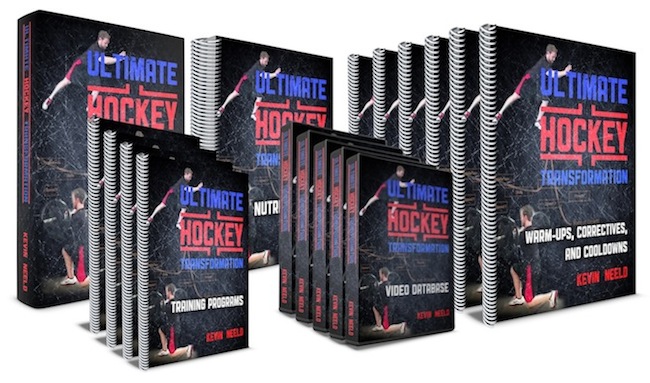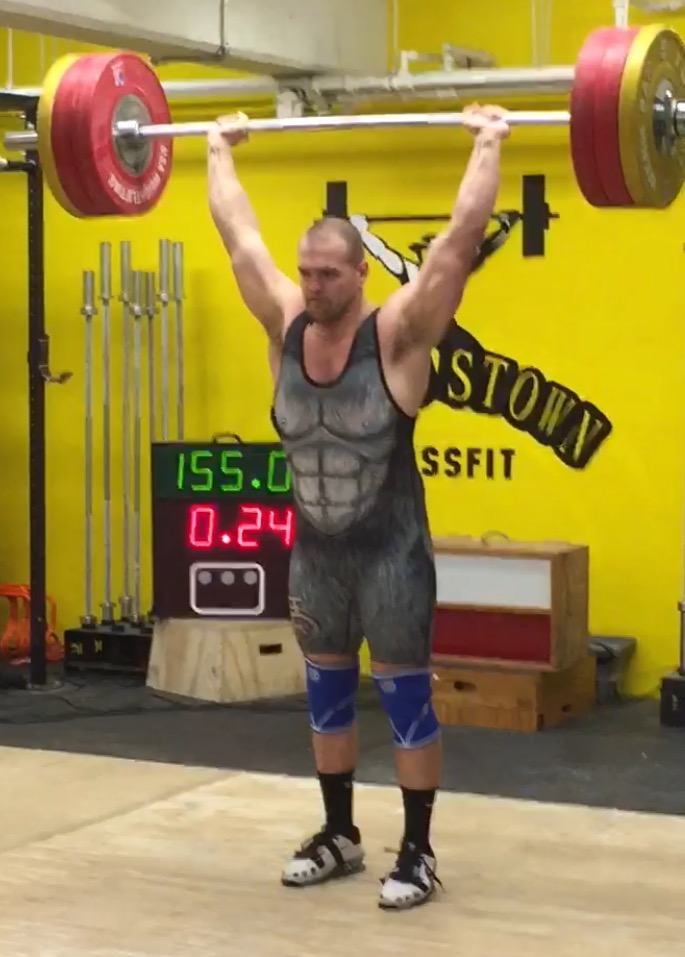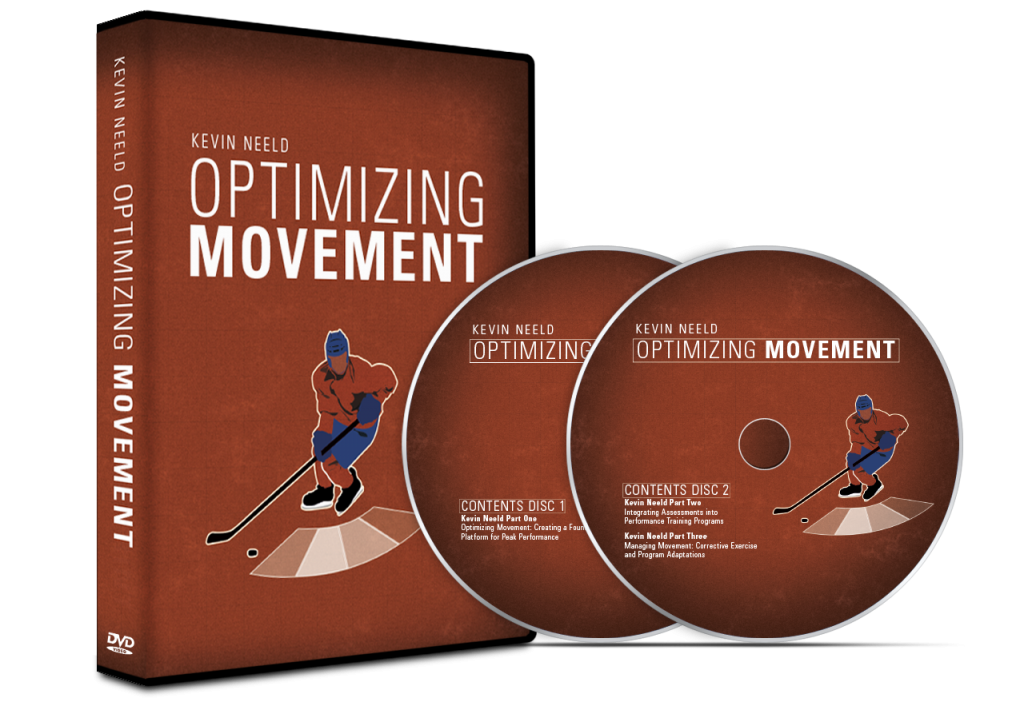Today’s Thursday Throwback discusses a few tips related to “the art of coaching” that will help you get the most out of your athletes. Despite originally publishing this over 4 years ago, these things continue to be staples in how our entire staff at Endeavor approaches coaching our athletes. These are timeless principles that can be applied in environments with athletes at almost every level. Enjoy!
5 Ways to Get the Most from Your Athletes
Piggy-backing on last week’s post on the importance of developing great coaching skills to compliment a sound knowledge base (refer here: Become a Great COACH!), I thought I’d share 5 ways I’ve found to get the most out of our athletes.
5) Make Exercises/Instruction Specific to the Athlete
In a strength and conditioning setting, there are appropriate degrees of specificity to incorporate into an athlete’s training program, and more appropriate training qualities to incorporate movements that more directly mimic sport movements. For example, speed and power work are more appropriate opportunities to teach foot patterns, body positions, and proper rotational power generation; whereas strength work that mimics sport specific movements would be fruitless/counterproductive.
Goalie-specific training exercise. Note the rapid eye movement that precedes the jump and the rebound.
In all cases, you can gain a lot of ground with your athletes if you can explain why what they’re doing will apply to their sport. This doesn’t need to be overly complex. When we kettlebell (novice) or trap bar (less novice) deadlift our athletes, we’ll explain that maintaining a neutral spine or “flat back” is important because it teaches the body to have a stable core, which will allow them to transition quicker in their sport. In reality, the athlete probably hears some Charlie Brown esque modification of what we’re saying: “wha wha wha wha CORE wha wha transition wha quicker”. “You mean this will help make me faster?!” “Yes.” Sold.
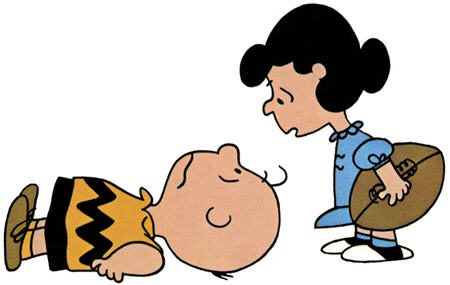
Maybe I wouldn’t have picked you last if you would pack your neck while you’re blocking Charlie Brown!
4) Be Flexible with Dress Code
When I started at Endeavor, one of the first things I did was establish an “acceptable” dress code. Shirts with inappropriate language/insinuations weren’t acceptable, nor were shirts that lacked sleeves (a tough sell in New Jersey!). The last thing I want is a bunch of kids that think they’re stronger than they are flexing in front of the mirror in between sets.
I wonder if people would still flex and lift up their shirt to check out their abs in the mirror wipe the sweat off their face if this was going on in the background
That said, there are times when it’s appropriate to bend the rules a little to meet your athletes half way. If your athletes want to wear the medicine ball that they just obliterated against the wall over their face, they should be free to do so.
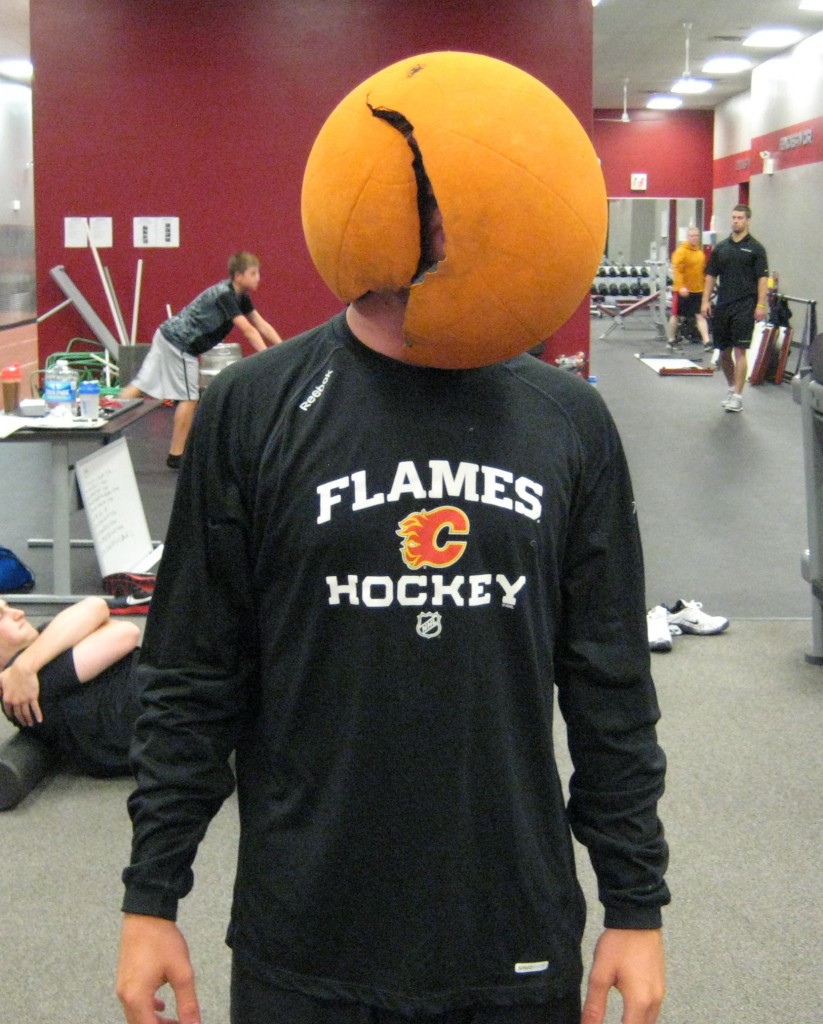
Nice.
3) Don’t be an asshole. If you’re an asshole, apologize.
This will go hand-in-hand with the last point of this article, but strength coaches stereotypically have the reputation of being hard assess. I think there is a fine line between being a source of inspiration and motivation and just being an asshole. Why are you coming down so hard on an athlete? Is it because you really care about them and have a hard time watching self-destructive behavior? Is it because your personality just doesn’t mesh well with his/hers? Is it because you slept like hell the night before and are just generally irritable? Is it because you think that’s your job?
It’s worth being conscious of your own mood and recognizing how it may influence the way you coach. I also think it’s important to recognize that no one is infallible, even the coach. It’s okay; rather it’s recommended that you admit when you make a mistake and apologize to your athlete(s). It’s not a sign of weakness, it’s a sign of humanity.
Just last week I had a morning where a few little things kind of pissed me off, and I ended up taking it out on a player whose effort was a little “unmotivated” that day. After he finished training, I pulled him into my office apologized, said I was wrong to come down on him like I did, explained exactly what I was looking for from him and why I thought it was important/beneficial for him to adopt certain behaviors. He understood where I was coming from, we’re on the same page, and I think we’re both better off for it.
2) Play Music they Like
Music plays an irreplaceable role in building a high energy environment. In an ideal world, the athletes and coaching staff would both be inspired by the same genres of music. This isn’t always the case. Last Summer we had a couple groups of hockey players that absolutely thrived on Phil Collins. This started as a joke, but manifested into what I refer to as audible steroids. When Phil came on, everyone turned it up a notch.
Despite everything I learned from Tony Gentilcore while at Cressey Performance a few years back, I never personally took to techno music. But a few of our athletes requested a “Techno Tuesday” to break up the monotony of Metallica Monday, and Rise Against Tuesday, Wednesday, Thursday, Friday, Saturday, and Sunday. I hesitantly allowed it. Now Techno Tuesday has become Techno Weekdays. “Club Endeavor” wasn’t exactly what I had in mind, but if it gets everyone to work harder, I’m all in. We even have a player that enters the morning group with a general sense of disdain, whose mood I can instantly turn by playing:
At least 20 of the 14,000 views are from my iphone at 8:15am.
1) Let Them Know You Care!
Save the best for last. NOTHING else matters if your athletes don’t know much you care about them. “Care” in this sense refers to both wanting the best for them as athletes AND as people. Become personally invested in their success. I can’t tell you how many 1-on-1 meetings I’ve had with players just to get a better understanding of what their personal goals are and to ensure I’m doing everything I can to help move them in that direction. I’m exceedingly flexible with scheduling to accommodate beach trips and visits from out of town girlfriends.
It’s imperative that the athlete makes a commitment and demonstrates a dedicated effort to their own progress, but I don’t think this needs to happen at the exclusion of all things fun, especially not in the Summer, and not with hockey players that are stuck indoors for the majority of the year. I (only half jokingly) tell our players to soak up as much Vitamin D as they can over the weekend because Vitamin D is thought to be helpful in improving maximum strength levels in deficient individuals (most hockey players).
At the most foundational level, getting athletes to buy in to your program comes down to them understanding that you have their best interest in mind. Sometimes this comes down to reanalyzing your intentions with the program, but most times it comes down to the way you build your relationship with your athletes. Once they know how much you care them, they’re much more likely to respond to your advice.
To your success,
Kevin Neeld
HockeyTransformation.com
OptimizingMovement.com
UltimateHockeyTraining.com
Please enter your first name and email below to sign up for my FREE Athletic Development and Hockey Training Newsletter!
Get Ultimate Hockey Transformation Now!
Year-round age-specific hockey training programs complete with a comprehensive instructional video database!
Get access to your game-changing program now >> Ultimate Hockey Transformation
“Kevin Neeld is one of the top 5-6 strength and conditioning coaches in the ice hockey world.”
– Mike Boyle, Head S&C Coach, US Women’s Olympic Team
“…if you want to be the best, Kevin is the one you have to train with”
– Brijesh Patel, Head S&C Coach, Quinnipiac University


